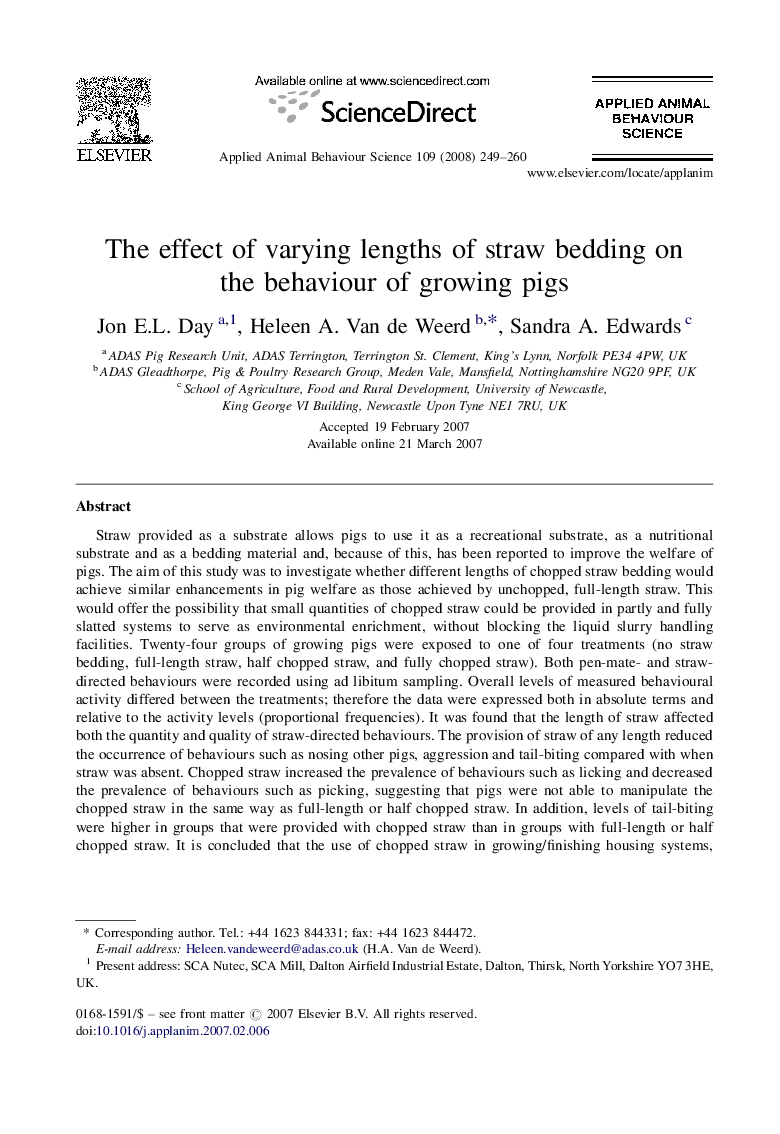| Article ID | Journal | Published Year | Pages | File Type |
|---|---|---|---|---|
| 6379768 | Applied Animal Behaviour Science | 2008 | 12 Pages |
Abstract
Straw provided as a substrate allows pigs to use it as a recreational substrate, as a nutritional substrate and as a bedding material and, because of this, has been reported to improve the welfare of pigs. The aim of this study was to investigate whether different lengths of chopped straw bedding would achieve similar enhancements in pig welfare as those achieved by unchopped, full-length straw. This would offer the possibility that small quantities of chopped straw could be provided in partly and fully slatted systems to serve as environmental enrichment, without blocking the liquid slurry handling facilities. Twenty-four groups of growing pigs were exposed to one of four treatments (no straw bedding, full-length straw, half chopped straw, and fully chopped straw). Both pen-mate- and straw-directed behaviours were recorded using ad libitum sampling. Overall levels of measured behavioural activity differed between the treatments; therefore the data were expressed both in absolute terms and relative to the activity levels (proportional frequencies). It was found that the length of straw affected both the quantity and quality of straw-directed behaviours. The provision of straw of any length reduced the occurrence of behaviours such as nosing other pigs, aggression and tail-biting compared with when straw was absent. Chopped straw increased the prevalence of behaviours such as licking and decreased the prevalence of behaviours such as picking, suggesting that pigs were not able to manipulate the chopped straw in the same way as full-length or half chopped straw. In addition, levels of tail-biting were higher in groups that were provided with chopped straw than in groups with full-length or half chopped straw. It is concluded that the use of chopped straw in growing/finishing housing systems, whilst better than no enrichment, is inadvisable because of the possibility that levels of adverse pen-mate directed behaviours will increase.
Keywords
Related Topics
Life Sciences
Agricultural and Biological Sciences
Animal Science and Zoology
Authors
Jon E.L. Day, Heleen A. Van de Weerd, Sandra A. Edwards,
